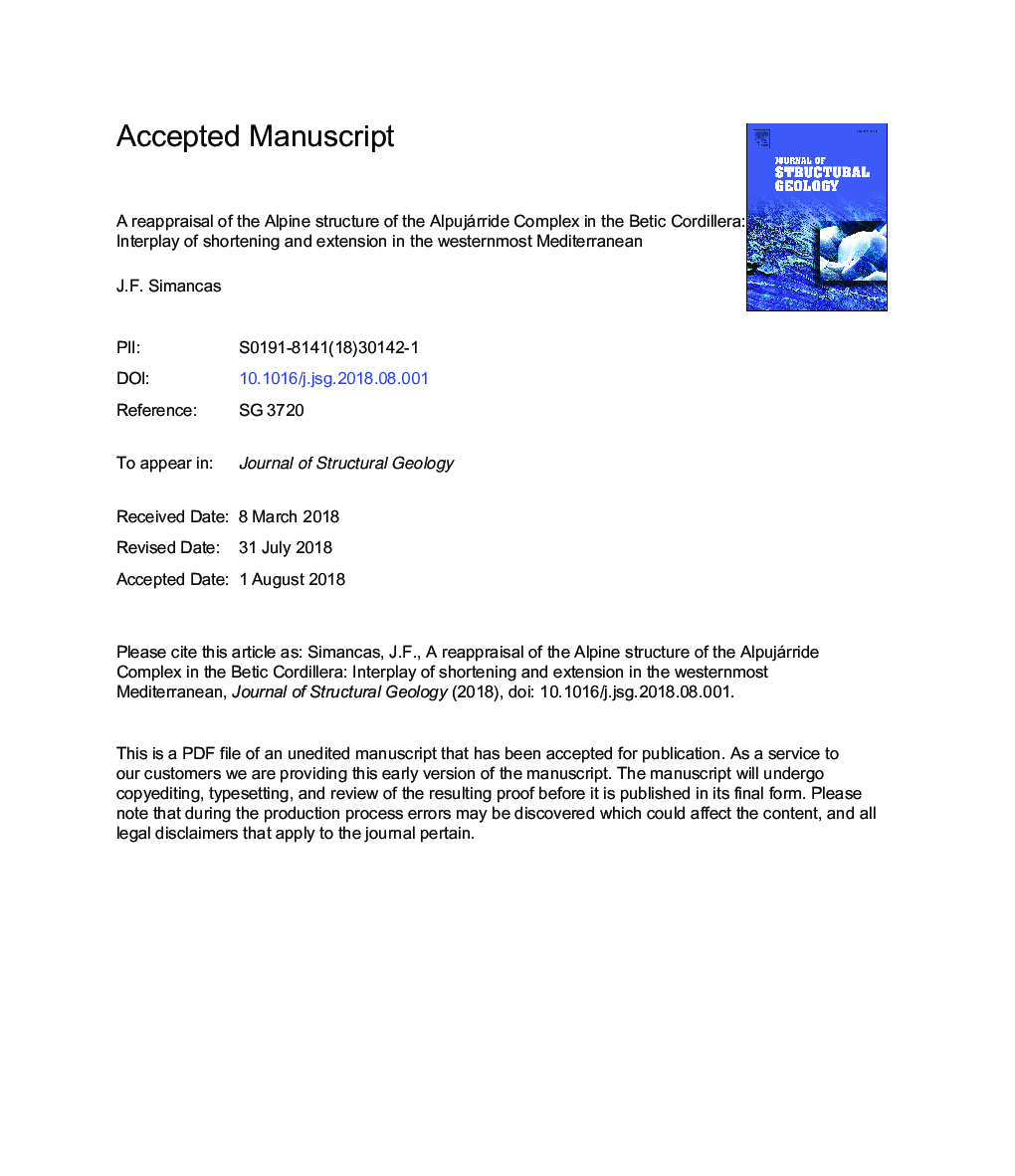| Article ID | Journal | Published Year | Pages | File Type |
|---|---|---|---|---|
| 8914351 | Journal of Structural Geology | 2018 | 34 Pages |
Abstract
The Alpujárride Complex has concentrated discussion on the extent and role of orogenic extension in the Betic-Rif Orogen (westernmost Mediterranean). Structural analysis on Permo-Triassic rocks of the Alpujárride Complex is a firm basis to assess extension and to integrate it in the plate tectonic scenario. The main Alpine deformation was dominated by top-to-the-NE shearing, with rare map-scale folds; as a whole, this deformation attests ductile extension during exhumation of previously subducted rocks. Some authors have suggested that the Alpujárride Complex continued evolving extensionally since this early exhumation, but in this paper a stage of regional shortening is documented. Thus, km-scale overturned NW-vergent folds are interpreted as witnessing shortening. Subsequently, post-metamorphic low-angle faults of Burdigalian-Langhian age cut the train of folds in two ways: firstly, top-to-the-N thrusts generated stratigraphic and metamorphic superpositions; then, top-to-the-N low-angle normal faults, kinematically congruent with the thrusts, formed due to accretion at deep levels of the orogenic wedge when the Nevado-Filábride Complex underthrust the Alpujárride Complex. The shortening stage occurred at latest Oligocene early-middle Miocene and can be related to fast convergence rates between Africa and Iberia. Later, a drop in the convergent rates prompted lithospheric rollback and top-to-the-SW crustal extension since Serravallian time, coexisting with moderate orthogonal shortening that gave way to E-W trending upright folds.
Related Topics
Physical Sciences and Engineering
Earth and Planetary Sciences
Geology
Authors
J.F. Simancas,
